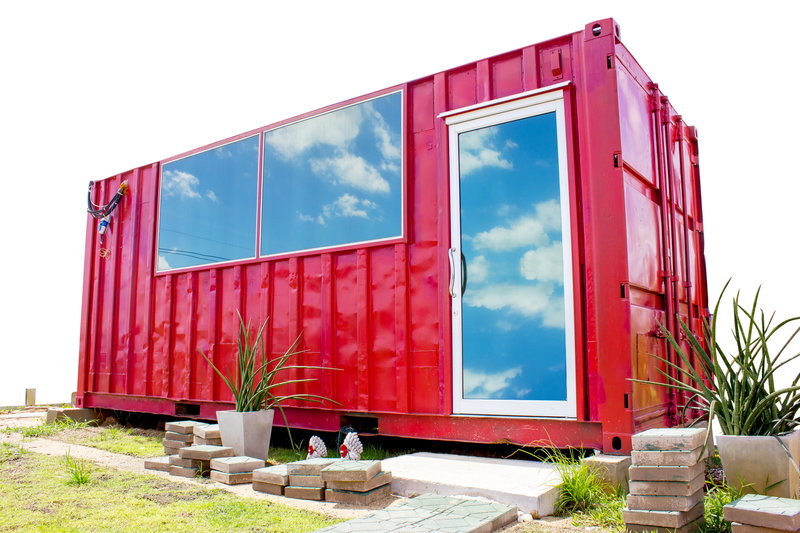What's Inside a Builders Skip: A Detailed Exploration
If you've ever strolled past a construction site, you've likely noticed builders skips--those large metal containers brimming with an eclectic mix of waste materials. But what really goes inside a builder's skip? In this comprehensive and engaging article, we'll unravel the contents, regulations, and nuances associated with builders skip contents, offering both industry professionals and curious readers a closer look at what awaits behind the skip's metal walls.
Understanding the Purpose of a Builders Skip
Before exploring the contents, it's essential to grasp the primary role of a builder's skip. These robust containers are a staple at renovation projects, construction sites, and even large-scale domestic cleanouts. A builder's skip provides a central, safe location for collecting and storing a vast range of waste until it's removed for sorting, recycling, or landfill disposal. The convenience and capacity of builders skips make them invaluable on any building site.

Common Types of Skips in Construction
Not all skips are created equal. The typical builder's skip holds between 6 and 8 cubic yards of waste, but sizes range from 2-yard mini skips to gigantic 40-yard roll-on-roll-off containers. For most residential and small commercial projects, the standard "builder's skip" is the most popular due to its balance of capacity and footprint.
- Mini skips (2-3 yards): Best for small home clearances and minor renovations.
- Builder's skips (6-8 yards): The industry standard for general building waste.
- Maxi skips (10-18 yards): Suitable for larger sites with vast amounts of bulky waste.
- Roll-on-roll-off skips (20-40 yards): Used for major demolition or extensive refurbishment projects.
What's Inside a Builder's Skip?
Now for the heart of our exploration: what is actually placed inside a builder's skip? Skips serve as the primary collection point for waste generated by construction and renovation activities. The contents often include but are not limited to the following:
1. Inert Waste
The most common skip contents are inert materials, which do not undergo significant physical, chemical, or biological changes. These include:
- Bricks
- Concrete rubble
- Ceramics (tiles, sinks, toilets)
- Stone and gravel
- Soil (clean, uncontaminated)
- Sand and aggregates
These materials result primarily from demolition or site clearance and are often heavy. They're typically recycled as hardcore for new construction projects.
2. Construction and Demolition Debris
A large portion of the builder's skip load consists of waste generated from knock-downs and fresh installations, such as:
- Timber (old joists, doors, frames, pallets)
- Metal (pipes, nails, reinforcement bars, brackets)
- Plastic materials (old windows, piping, packaging)
- Plasterboard and drywall
- Insulation materials (subject to regulations, see below)
These materials are segregated and recycled where possible, especially metals and uncontaminated timber.
3. Unwanted Fixtures and Fittings
Renovation work always leads to the removal of old fixtures:
- Kitchen cabinets
- Bathroom suites
- Old radiators and boilers (minus hazardous parts)
- Windows and doors
Bulky and often mixed-material, these items frequently appear in skips during domestic refurbishments.
4. Miscellaneous Items
You'll find surprising odds and ends in a builders skip. While some of these are permitted, others should be disposed of separately:
- General rubbish (site sweepings, packaging, offcuts)
- Old carpets or flooring
- Garden waste (when clearing external areas)
- Broken tools or site equipment
- Furniture (safely broken down)
Some skip hire companies restrict what you can place inside; always check the terms and conditions before loading.
Items Not Allowed in a Builders Skip
Understanding what cannot go in a builder's skip is just as crucial as knowing what can. Due to environmental laws and safety considerations, certain items are typically prohibited:
- Asbestos and hazardous waste
- Paints, solvents, and chemicals
- Batteries and electrical items (WEEE waste)
- Tires and vehicle batteries
- Electrical appliances (fridges, TVs, microwaves)
- Gas cylinders and pressurized containers
- Medical waste
- Liquids (oil, fuel, paint, etc.)
These materials require specialized disposal processes to prevent environmental harm and comply with waste legislation. Some skip companies offer separate collection for these types of waste--always inquire if you anticipate any restricted items.
How Is Skip Waste Processed?
Once a builder's skip is hauled away, its journey is far from over. All waste is transported to a waste transfer station for sorting, recovery, and responsible disposal. Here's the typical process:
- Mechanical sorting: The skip's contents are tipped onto sorting lines. Recyclable items (metals, plastics, cardboard) are mechanically and manually separated.
- Screening for inert waste: Heavier items like concrete or stone are set aside, often processed for reuse in construction.
- Segregation of prohibited/hazardous items: Any inadvertently included prohibited waste is removed for specialist disposal.
- Bulk recycling: Clean wood, metals, and some plastics are sent to recycling plants.
- Residual waste to landfill: After all feasible recycling, the remaining "black bag" waste heads to landfill or incineration.
Skip waste processing aims to divert as much material as possible from landfill, aligning with modern sustainability practices.
Environmental Impact and Sustainability Considerations
The contents of a builder's skip can reveal a lot about a site's environmental practices. Increasingly, skip hire providers and building contractors strive to minimize landfill contributions and maximize recycling rates by:
- Segregating materials at source--placing timber, metal, and plastic in separate sections or skips.
- Choosing reputable skip hire companies committed to eco-friendly disposal.
- Avoiding contamination (e.g., not placing hazardous materials in general skips).
- Utilizing dedicated recycling skips for plasterboard, metals, or green waste.
These practices help cut carbon emissions, reduce landfill usage, and promote the circular economy within the construction industry.
The Most Unusual Skip Discoveries
While most skips contain the expected fare of rubble and rubbish, the unexpected sometimes surfaces. Reports from skip hire companies mention strange discoveries, such as old safes, rare vintage furniture, collectibles, and personal artifacts. It's a fascinating testament to the skip's role as a repository of local history!
From time to time, hiring a skip leads to lost-and-found stories, where items of value or sentiment are retrieved just in time. If undertaking a big clear-out, check your skip's contents for anything you may regret tossing!
Builders Skip Regulations and Legal Responsibilities
Disposing of waste via a builders skip isn't as simple as tossing things haphazardly. Several legal requirements protect people, property, and the environment:
- Permits: Placing a skip on a public highway requires a permit from the local authority. Permit rules ensure safety and prevent obstruction.
- Waste transfer notes: Waste leaving your site must be accompanied by proper documentation, confirming its legal disposal.
- Duty of care: Skip users are legally obligated to avoid including hazardous or restricted items and to use licensed skip operators.
- Adequate signage and lighting: On public roads, skips must be clearly marked and lit at night.
Failing to comply with regulations can result in significant fines and environmental liability.
Tips for Managing Builders Skip Contents Effectively
To maximize space and compliance when using a builder's skip, consider the following strategies:
- Plan ahead: Estimate the types and amounts of waste. Order the right skip size--a slightly larger skip is often more cost-effective than overfilling.
- Load methodically: Place heavy materials at the bottom, and break items down flat to conserve space. Fill gaps with small debris and rubbish.
- Separate waste streams: If possible, keep different waste types apart for easier recycling and potential cost savings.
- Never overfill: Skips must not be filled above the top rim for safety reasons. Overfilled skips may not be collected, or may incur surcharges.
- Check what's allowed: When in doubt, ask your skip provider about specific items before disposal.
- Secure hazardous or valuable materials: Remove any dangerous substances from the site via approved channels, not the general skip.

Frequently Asked Questions about Builders Skip Contents
What happens if I put prohibited items in the skip?
If restricted materials are discovered--such as asbestos, electricals, or paint--the skip operator may refuse collection, impose additional charges, or even report non-compliance. Always seek clarification with your hire company if unsure.
Can a builder's skip be used for house clearances?
Absolutely! While designed for construction waste, builder's skips are frequently used for bulky domestic projects, provided restricted items (fridges, TVs, hazardous waste, etc.) are not included.
How can I reduce the environmental impact of my skip?
Separate recyclables, pack efficiently, and choose an operator with strong environmental credentials. Avoid dumping hazardous materials, and reuse or donate items where possible.
Do I need a permit for my skip?
Only if it's placed on public land or a road. Private driveways or gardens do not require permits. Check with your local authority for details.
Conclusion: The True Nature of a Builders Skip
A builder's skip may look like a jumble of rubbish at first glance, but its contents tell a hidden story of construction, renovation, and everyday life. From bricks and mortar to outmoded bathtubs and unexpected treasures, the inside of a builder's skip reflects the progress--and the waste--of projects large and small.
Understanding what goes inside, what's restricted, and how to best manage your waste ensures your building or clearance project runs smoothly, cost-effectively, and in harmony with best environmental practices. Remember: a well-managed builder's skip is the unsung hero of any successful build!
- To sum up: Builder's skips are indispensable for handling bulk waste--just be sure to follow the rules and recycle where you can.
- Avoid prohibited materials for safety, compliance, and peace of mind.
- Plan ahead and load smartly to maximize capacity and sustainability.
Whether you're a homeowner, site manager, or simply curious, we hope this detailed exploration of builders skip contents has demystified those mighty metal bins and inspired conscientious disposal!